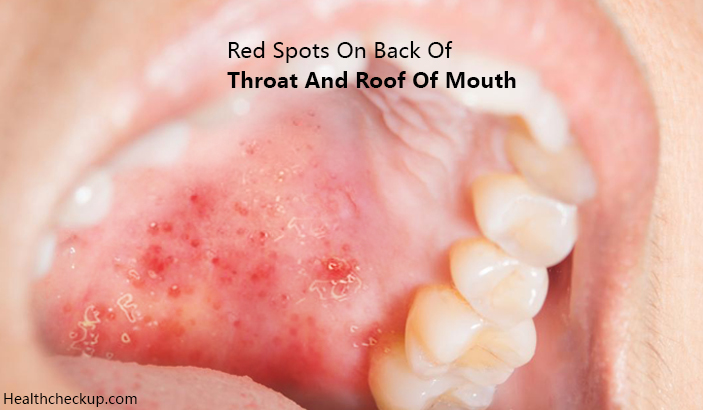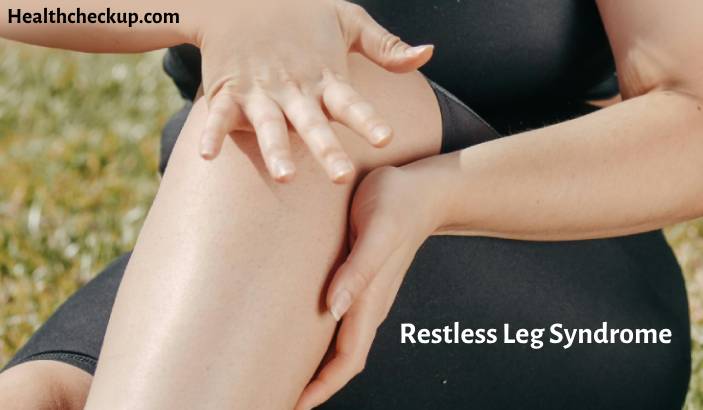What Do Red Spots On Back Of Throat And Roof Of Mouth Indicate?
Presence of red spots on the back of the throat and roof of mouth could be as a result of an infection or some other medical condition.
What Causes Red Spots On Back Of Throat And Roof Of Mouth?
Some of the possible causes of red spots on the back of the throat and roof of the mouth are given in the table below along with the description of each condition and their signs and symptoms:
| Sr. No. | Cause | Description |
| 1. | Strep Throat | Strep throat means is a term used for streptococcal (bacterial) infection of the throat and tonsils.
This Infection Spreads Through
Signs And Symptoms Include
|
| 2. | Canker Sores | These are also called aphthous ulcers or aphthous stomatitis. Canker sores are small painful ulcers which can occur anywhere in the oral cavity, throat or roof of the mouth. Canker Sores May Form As A Result Of The Following
Signs And Symptoms Include
|
| 3. | Oral Herpes | Oral herpes infection occurs due to infection from herpes simplex virus (HSV), most common strains being HSV-1 and HSV-2.
Herpes infection is contagious and can spread by touching skin, saliva or mucous membranes of an infected person. The amount of time between coming in contact with an infected person and the development of signs and symptoms can be 2-10 days. Signs And Symptoms Include
|
| 4. | Hand Foot And Mouth Disease (HFMD) | It is a contagious, viral infection seen commonly among young children between 5-10 years of age due to coxsackievirus A16.
This illness can be spread from person to person by coming in contact with an infected patient’s:
There is no treatment for hand foot and mouth disease. Signs And Symptoms Include
|
| 5. | Oral Cancer | It is cancer of the mouth, or lining of the mouth, lips, cheek, and roof of the mouth or upper throat.
Risk Factors For Developing Oral Cancer Are
Signs And Symptoms Include
|
Diagnosis Of Red Bumps On Back Of Throat
Since this problem can be due to a variety of causes, it is a wise option to visit a doctor for the same instead of resorting to self-diagnosis.
If an infection is suspected, your doctor may advise you to undergo a set of tests to confirm the diagnosis and treat accordingly.
- Canker Sores – Can be diagnosed clinically without any tests
- Strep Throat – A rapid strep test or a throat swab culture help to confirm the diagnosis
- Oral Herpes – This is also generally a clinical diagnosis. Tests like viral culture and Tzanck smear staining may be done to confirm HSV infection
- Hand Foot And Mouth Disease – Diagnosis can be confirmed by isolation of virus from oral lesions and viral culture
- Oral Cancer – Visible or palpable lesions of the oral cavity. CT or MRI scan and tissue biopsy give a definitive diagnosis along with the staging of cancer
[Read – Roof of Mouth Sore Causes]
Treatment
- In most cases, these red spots resolve by themselves. Yet, treatment for red spots on the back of the throat and roof of the mouth will depend entirely on the underlying cause.
- Antibiotics or anti-viral medications and Non-steroidal anti-inflammatory drugs (NSAIDs) may be prescribed depending upon the type of infection. NSAIDs help to control inflammation and reduce swelling.
- Paracetamol is frequently advised for symptomatic relief from fever, body ache, malaise, and headache.
Complications
Red spots on the back of the throat and roof of the mouth are generally mild and resolve on their own without any specific treatment.
However, you need to consult a doctor if the red spots do not resolve even after treatment or if you notice complications such as:
- Formation of ulcer at the site of red spots
- Discharge of blood or pus from the red spots
- Fever along with red spots not responding to medications
- Swollen lymph nodes
- Severe pain in spite of being on medications
- Loss of sensation of the mouth or cheek – As in herpes infection complication
- Dehydration due to inability to eat or drink sufficiently
- Viral meningitis characterized by high-grade fever, unusual drowsiness, and neck stiffness is a frequent complication of viral infections
Dr. Himanshi is a Homoeopathic consultant and currently working as a lecturer in Post-graduate faculty of Homeopathy, Parul University, Vadodara. Completed BHMS and MD in Homeopathy in January 2018 and also has a clinical experience of about 6 years. Personal interests include reading, spending time with family and traveling.








